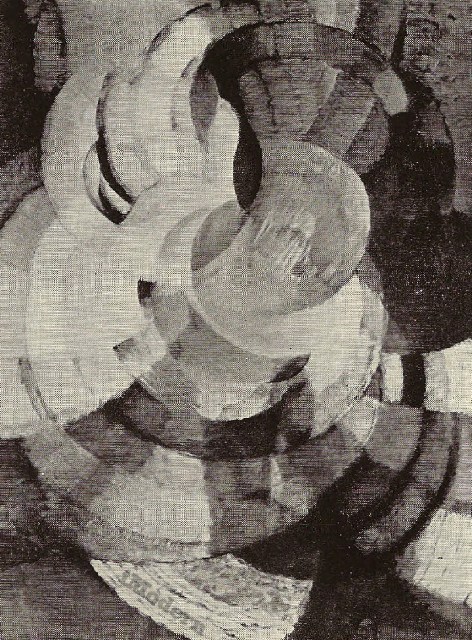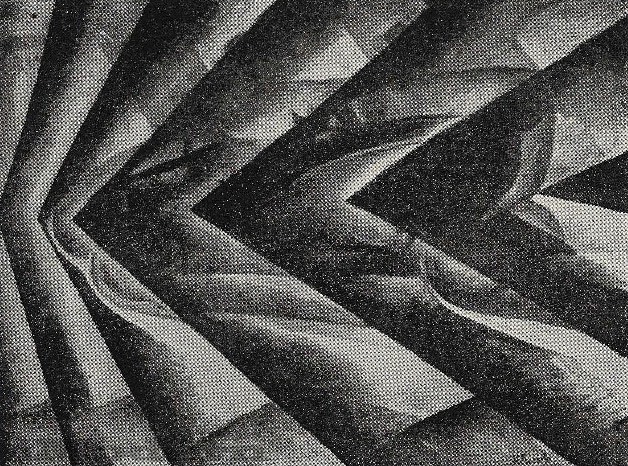
Cubism and Futurism Abstract ArtThese are the two movements, with more or less abstract tendencies, that first influenced the majority of experimental artists in this country, beginning about 1913 when both movements were at their height. Cubism and Futurism, both of which had a great influence in the United States derives from the researches of Cezanne and Seurat. The beginnings of Cubism date back to about 1908 under the twin aegis of Picasso and Braque. In the case of Cubism, the primitivist, instinctual content of Gauguin's and van Goh's paintings and the later discovery of the barbaric, expressive power of Negro sculpture played an important part in such an early cubist picture of Picasso's as his Les Demoiselles d'Avignon. And however much Picasso and his cubist followers tended to limit their researches to the still life, they never divorced themselves completely from the sentimental, even romantic, implications of their chosen subject matters the paraphernalia of the studio, musical instruments, the guitar, mandolin and violin and the characters out of the old commedia dell'arte associated with such instruments, Harlequin, Columbine and Pierrot.
Despite such emotional or non-rational elements in cubist painting, however, its rational motivation must still be said to have remained uppermQst. It consisted in a process of analytical abstraction of several planes of an object to present a synthetic, simultaneous view of it. And by directing the formal planes of this synthetic view towards the observer rather than making them retreat by traditional perspective principles into an illusionistic space, the picture frame no longer acted as a window leading the eye into the distance but as a boundary enclosing a limited area of canvas or panel. In the so-called analytical phase of Cubism, painting tended also to be monochromatic, presumably to avoid as much as possible any sensuous or naturalistic reference to color. The leading Cubists, Picasso and Braque, refused to take abstraction further than this point and actually in time climbed down from their pinnacle of analytical experiment to a more decorative, sensuous plateau. They left the final step of total geometrical abstraction to others.
Another proto-abstract movement, an anti-rational offshoot of Cubism, Futurism was launched by the Italian Futurists about 1910. Rebelling against the cubist analysis of static form, the Futurists were above all inspired by the dynamism of the machine, which they proceeded to glorify and to make a central tenet in their artistic credo. Man to the Futurist must accept the machine and emulate its ruthless power. By way of emulation they attempted to paint movement by indicating abstract lines of force and schematic stages in the progress of a moving image. And furthermore, in some instances they sought to involve the observer in their pictures by viewing movement from an interior position-the inside of a trolley car, for example-thus denying, as the Cubists did, formal laws of perspective. Where the Cubists strove to eliminate three-dimensional space and thus bring the image in the picture closer to the observer, although still at a distance, the Futurists attempted to suck the observer into a pictorial vortex. The greatest difference between these two proto-abstract movements, however, is that the one, Cubism, is concerned with forms in static relationships while Futurism is concerned with them in a kinetic state. Furthermore, the Cubists, with few exceptions, paid no attention to the machine, as such, while the Futurists, as we have said, glorified it. The cubist movement, significantly, had no overt political implications and indulged in no manifestoes. The Futurists, on the other hand, worshipped naked energy for its own sake and in their writings pointed forward to the power-drunk ideology of Fascism. The Cubists, it may be said, immured themselves from any contact with the public by shutting themselves up in their studio laboratories. The Futurists came out into the market place and demagogically attempted to appeal to the man in the trolley car. If their pictures today seem dry and doctrinaire to some of us, the ideological appeal of Futurism and its political partner, Fascism, was, we are all uncomfortably aware, quite the reverse.
Furthermore, the generally rational-minded Cubist contented himself as we have noted with the still-life materials of his studio for subject matter and abstract dissection, whereas the futurist picture falls mainly into the category of landscape and figure compositions, however urban and mechanical the emphasis. Davis' Lucky Strike abstract art from 1921 is a good example of Cubism. |
Site Map | Copyright 2014 | RobSequin.com | Contact Us



